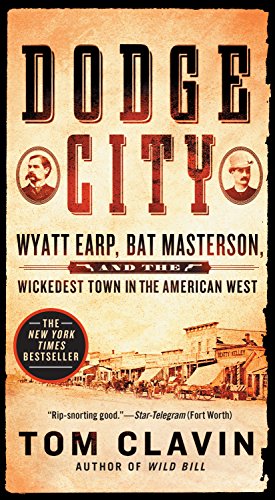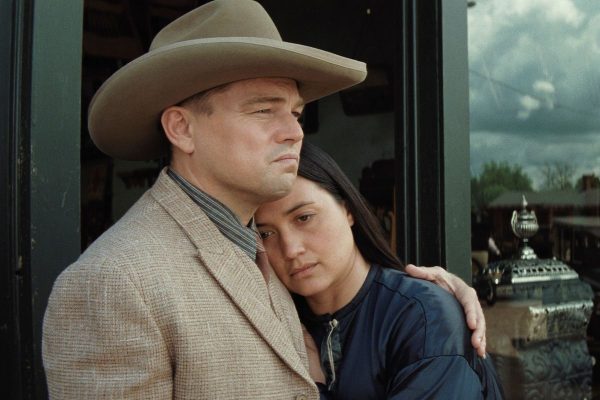REVIEW: Where the phrase ‘Get out of Dodge’ comes from

The famed idiom, “Get out of Dodge,” is used to describe leaving a place with an uncomfortable or dire circumstance. It originated from Dodge City, Kansas, specifically from events from 1870s Dodge City.
During that decade, Dodge City was a cow town, or an incorporated settlement where cowboys would bring cattle up from Oklahoma/Indian Territory and Texas to the railroads to ship to the butchering markets in the east.
Dodge City became a “boomtown,” or a town that quickly grows prosperous after incorporation. Because of this, Dodge became the most infamous and dangerous cow town in the Midwest. It earned these descriptors and its commonplace phrase from all the rambunctious and deadly men who ventured in.
A historical nonfiction book titled “Dodge City” details 1870s Dodge City and its degree of anarchic lawlessness. It was written by Tom Clavin, a historic researcher, magazine writer and editor. He also became a New York Times bestselling author, following the release of “Dodge City.”
The book tells not only the story of Dodge City, but also of its two feared peace officers: Wyatt Earp and William Barclay “Bat” Masterson. This term, “peace officers,” is what police officers were called in that age, because Dodge City was so wild and wicked that whenever a peace officer came to the scene, it was most likely to restore peace to the town. The book is also cut into four acts, with the first two telling of the Masterson and Earp families and their consistent moving and buffalo-hunting days. These two acts present so much historical background on the Earps and Mastersons that the reader feels as if they are living alongside them.
However, the Wild West is no place to want to live in. The third act is where the book shines the most, as it presents the dirty and grimy outlook of 1870s Dodge City, where Masterson and Earp were peace officers.
Masterson had the title of sheriff of Ford County, and Earp was the assistant marshal of Dodge City. They were best friends and always relied on one another. For instance, Masterson may be out of Dodge City chasing down a bank and train robber, but if he needed any additional help, Earp would be the first person he’d send a telegram to, and he and his own posse would always come to Masterson’s aid.
Both men were feared and earned the reputation throughout the country as being the most dangerous lawmen in the West. They would always be there to “buffalo” (or lawfully intimidate) a criminal or one of the every-night drunken shootists gambling in one of Dodge City’s many saloons.
Earp and Masterson believed that drawing their pistols was the last resort when apprehending a peace disturber. Both of them were equally intimidating men in confrontations, despite being kind, generous, and easy to speak with.
Earp was more serious and forthright while Masterson was more easygoing, relying on his excessive sense of humor. With both of them together, they were dubbed as the most effective and dangerous lawmen in the West.
The fourth act discusses how after Dodge City’s first decade, as it entered into the 1880s, the cowboy scene was dying and the frontier was changing as industrial ideas began to take root in the west.
Earp resigned his position in Dodge City, headed farther west and became caught in the infamous O.K.Corral Gunfight in Tombstone, Arizona, where he and his brothers won.
It is one of the greatest Wild West stories to be told. Masterson lost in his reelection campaign for Ford County sheriff from becoming cocky about his reputation, and he settled into lawing positions with his brothers farther west until he finally settled down as a newspaper columnist in New York City.
The final act also finishes the lives of any noteworthy associates and friends and family of Earp and Masterson.
With the book being over 400 pages, it provides the reader with interesting character after interesting character, as well as presents fascinating stories about their histories and certain confrontations that all the named lawmen and outlaws have encountered. The book is a historical recollection first before a gunslinger story collection but does immaculately at balancing both.

Tyler Guthrie was a columnist with The Sunflower. Guthrie uses he/him pronouns.


















Joe • Jul 12, 2024 at 8:45 am
I need to get out of Dodge…
Bob hope • Jun 21, 2023 at 9:14 pm
Only if they could see it now!!!! They would roll over in there grave!!